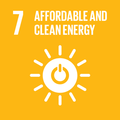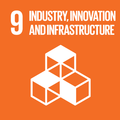The MetLife Stadium features solar panels, energy-efficient windows, water-saving toilets and was partly constructed with recycled steel and plastic.
With 82,500 seats and TV audiences in the millions every week, the MetLife Stadium in New Jersey creates widespread awareness on building sustainably. The construction of the MetLife Stadium saw 83% of construction waste recycled, 40,000 tons of recycled steel used, and construction vehicles using cleaner fuels. Skanska, the design-build contractor, established a partnership with the U.S. Environmental Protection Agency (EPA), resulting in low water and solid waste production.
The MetLife Stadium is twice as big as the stadium it replaced in 2010 but uses 30% less energy for operations, while also producing its own renewable electricity with a rooftop solar ring. The stadium is well connected to improved public transportation, which resulted in more than 5 million avoided vehicle miles traveled from 2009 to 2013.
Why you should care
Buildings are responsible for around 6% of global greenhouse gas emissions. By hosting the 2014 Super Bowl, and welcoming millions of guests and TV viewers every week, the MetLife Stadium showcases to the general public that technologies exist to affordably and sustainably construct large-scale green buildings. They have estimated to have reduced carbon dioxide emissions by around 1.68 million tons during the entire construction process and the stadium’s first year of operation.
How the Global Goals are addressed

Affordable and Clean Energy
The rooftop solar ring provides clean power to the new stadium, which uses less than two thirds the energy of the older and smaller stadium that it replaced.

Decent Work and Economic Growth
When building MetLife Stadium, Skanska committed to very large contracts worth $260 million with relatively small, minority- and women-owned business.

Industry, Innovation and Infrastructure
The MetLife Stadium has saved an estimated $19.9 million in operating expenses over the past 3.5 years, showing that green construction is economical when factoring in life-cycle costs.

Climate Action
Reducing energy consumption, improving energy efficiency and installing renewable power generation has all helped to cut CO2 emissions from the building.



